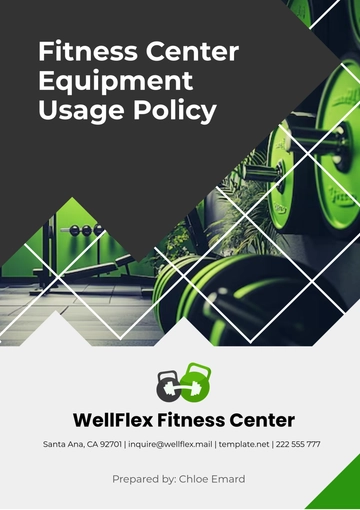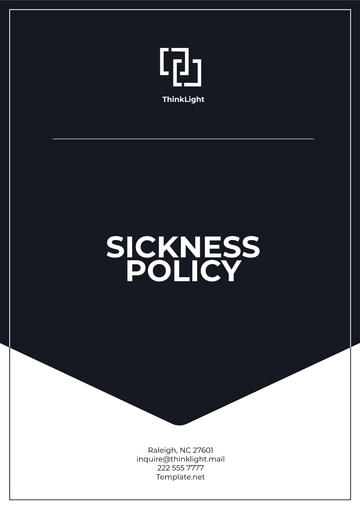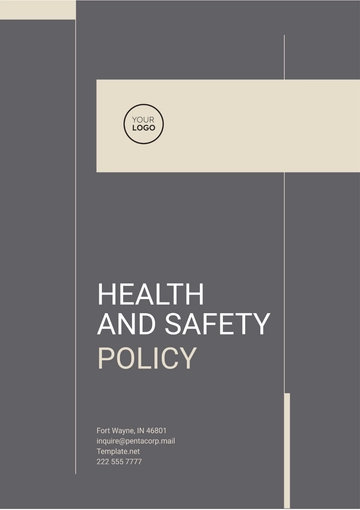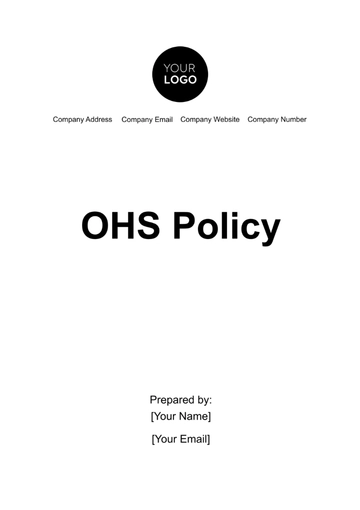Free Nursing Home Personal Protective Equipment (PPE) Policy

Introduction
This document outlines the Personal Protective Equipment (PPE) policy of [Your Company Name], effective from [Month Day, Year]. It is designed to ensure the safety and health of our staff, residents, and visitors by providing clear guidelines on the appropriate use of PPE within our nursing home facility. Compliance with this policy is mandatory for all employees, contractors, and visitors.
Policy Statement
We are committed to providing a safe and healthy environment. In alignment with this commitment, it is the policy of [Your Company Name] to require the use of PPE to reduce exposures to hazards that cause serious workplace injuries and illnesses. These injuries and illnesses may result from contact with chemical, radiological, physical, electrical, mechanical, or other workplace hazards. The proper use of PPE is essential to protect all individuals within our facility.
PPE Procurement and Maintenance
[Your Company Name] implements stringent procedures for the procurement, maintenance, and storage of Personal Protective Equipment (PPE). This framework ensures that our staff and residents are consistently protected by equipment that meets or exceeds industry standards.
Procurement Process: Our procurement strategy involves meticulous selection and continuous evaluation of suppliers to ensure our PPE meets stringent safety and quality benchmarks. We prioritize suppliers who demonstrate a commitment to ethical practices and sustainability, alongside their adherence to regulatory standards.
Maintenance and Inspection: To maintain the protective integrity of PPE, we conduct scheduled and random inspections to identify signs of wear, damage, or defect. This proactive approach ensures that all PPE remains in optimal condition, ready to offer maximum protection. Staff are trained to recognize and report any issues with PPE, triggering immediate action to repair or replace the item in question.
Storage and Accessibility: Proper storage solutions are crucial for preserving the functional integrity of PPE while ensuring it is accessible when needed. Our facilities utilize climate-controlled storage areas to prevent degradation of materials. PPE stations are strategically located throughout our premises, ensuring that staff can quickly access the necessary equipment in response to any situation.
Disposal of Personal Protective Equipment
The disposal of PPE is a critical component of our environmental health and safety protocols. [Your Company Name] employs a comprehensive disposal strategy to mitigate the risk of contamination and to promote environmental sustainability.
Segregation: We enforce strict segregation of PPE waste to differentiate between non-contaminated and contaminated items. This segregation is critical for controlling infection and preventing environmental contamination. Specialized containers are used for contaminated PPE, with clear labeling to prevent misuse.
Disposal Bins: Our facility is equipped with dedicated bins for the disposal of PPE, each clearly marked to facilitate correct segregation. These bins are positioned for easy access within all departments, ensuring efficient disposal practices.
Handling and Transportation: Personnel tasked with the disposal of PPE receive specialized training on the handling and transportation of hazardous waste. This includes instruction on protective measures to prevent personal exposure to contaminants and the potential spread of infectious materials.
PPE Requirements by Department
The following table outlines the PPE requirements specific to each department within [Your Company Name]. This table is intended to guide the selection and use of appropriate PPE to ensure maximum protection against occupational hazards.
Department | Gloves | Gowns | Masks | Eye Protection | Face Shields |
|---|---|---|---|---|---|
Nursing | Yes | Yes | Yes | Yes | Yes |
Maintenance | Yes | No | No | Yes | No |
Kitchen | Yes | No | Yes | No | No |
Administration | No | No | Yes | No | No |
PPE Use in Emergency Situations
Emergencies necessitate a swift and effective response, including the appropriate use of PPE to protect both responders and those they are assisting. [Your Company Name] is prepared to meet these challenges through rigorous training and the strategic placement of emergency PPE supplies.
Immediate Availability: Recognizing the critical nature of time in emergencies, we maintain a ready supply of emergency PPE kits in key locations throughout our facility. These kits are regularly inspected to ensure their completeness and the functional readiness of their contents.
Training: Comprehensive training programs are in place to ensure that all staff members can efficiently select and don PPE during high-pressure situations. These training sessions simulate real-life scenarios to build confidence and proficiency in emergency responses.
Post-Use Protocol: After an emergency situation has been addressed, a strict protocol follows for the decontamination, disposal, or laundering of used PPE. This protocol is designed to prevent cross-contamination within the facility and includes detailed reporting mechanisms to document the event and evaluate the response for continuous improvement.
PPE Compliance and Enforcement
To safeguard the well-being of all individuals within our facility, [Your Company Name] enforces strict adherence to our PPE policy. Compliance with these guidelines is not merely a recommendation but a compulsory component of our operational protocols. This section delineates the measures taken to ensure compliance and the steps followed in instances of non-adherence.
Strategic Compliance Monitoring
To uphold the highest standards of safety and health, [Your Company Name] employs a multi-faceted approach to monitor compliance with the PPE policy:
Regular Audits and Inspections: Scheduled and surprise audits are conducted to assess adherence to PPE protocols. These audits involve direct observation of practices, review of surveillance footage, and inspections of PPE storage and maintenance records.
Feedback and Reporting System: A confidential feedback and incident reporting system encourages staff to report non-compliance or concerns regarding PPE usage without fear of retribution. This system fosters a culture of transparency and continuous improvement.
Data-Driven Analysis: Leveraging data from audits, reports, and health outcomes, we continuously analyze compliance levels and identify areas for improvement. This data-driven approach informs targeted training programs and policy adjustments.
Enforcement and Disciplinary Actions
Non-compliance with PPE guidelines is addressed through a structured disciplinary process, designed to be fair yet effective in emphasizing the critical nature of PPE protocols:
Progressive Discipline Policy: Our enforcement model is built on a foundation of progressive discipline. Initial instances of non-compliance are met with educational interventions, escalating to more severe disciplinary actions for repeated violations, as detailed in our enforcement table.
Education and Retraining: Before imposing punitive measures, we focus on education and retraining. This approach ensures that staff understand the importance of compliance, not just the consequences of non-compliance.
Documentation and Review: All instances of non-compliance and the corresponding disciplinary actions are meticulously documented and reviewed. This documentation aids in identifying patterns of non-compliance and evaluating the effectiveness of our enforcement strategies.
The table below outlines the consequences of non-compliance with the PPE policy. This stepwise approach ensures that all staff members understand the importance of PPE and adhere to the policy requirements.
Offense Number | Consequence |
|---|---|
First Offense | Verbal Warning |
Second Offense | Written Warning |
Third Offense | Mandatory Retraining |
Fourth Offense | Suspension without pay (3 days) |
Fifth Offense | Termination of Employment |
Support and Rehabilitation
Understanding that compliance may sometimes be hindered by external factors or lack of understanding, [Your Company Name] provides support and rehabilitation opportunities:
PPE Fitting and Comfort Sessions: Recognizing that discomfort or poor fit can hinder compliance, we offer fitting sessions to ensure that all staff members have access to appropriately sized and comfortable PPE.
Open Dialogue and Continuous Education: We maintain an open dialogue with our staff regarding PPE practices, encouraging them to share their experiences and suggestions for improvement. Continuous education on the evolving landscape of PPE standards and best practices is provided to all staff members.
[Your Company Name]’s approach to PPE compliance and enforcement reflects our unwavering commitment to the health and safety of our community. By integrating monitoring, education, and disciplinary measures, we strive to cultivate an environment where the proper use of PPE is second nature to all.
Training and Education
At [Your Company Name], we recognize that the effective use of Personal Protective Equipment (PPE) is not just about having the right tools; it's about ensuring that every member of our staff is proficient in the proper use, maintenance, and disposal of these critical resources. To this end, our comprehensive Training and Education program is designed to instill a deep understanding and respect for PPE protocols, reinforcing our commitment to safety and health within our facility.
Core Objectives of the Training Program
Comprehensive Knowledge: Our program aims to provide staff with a thorough understanding of the types of PPE available, their specific uses, and the situations that require each piece. This knowledge is crucial for making informed decisions about which PPE to use and when.
Practical Skills: Beyond theoretical knowledge, we focus on practical skills training, including correct donning and doffing procedures, adjustment techniques to ensure a proper fit, and methods for maintaining the integrity and effectiveness of the PPE over time.
Safety Culture: Training extends beyond individual competence, aiming to foster a culture of safety within our organization. We emphasize the role of PPE in protecting not just the individual wearer but also their colleagues, residents, and the broader community.
Training Methodologies
Interactive Sessions: Our training approach includes interactive sessions that involve role-playing, demonstrations, and hands-on practice with various types of PPE. These sessions are designed to engage participants actively, enhancing retention and understanding.
Digital Learning Platforms: To accommodate diverse learning preferences and schedules, we also offer digital training modules. These platforms provide flexibility, allowing staff to complete training at their own pace while ensuring comprehensive coverage of all necessary material.
Regular Updates and Refresher Courses: Recognizing that PPE standards and technologies evolve, we conduct regular update sessions and refresher courses. These sessions ensure that staff are informed about the latest best practices and innovations in PPE.
Specialized Training for Specific Roles
Role-Specific Scenarios: Training is tailored to the unique needs and risks associated with different roles within our facility. By addressing specific scenarios that each role may encounter, we ensure that staff are prepared for the particular challenges they may face.
Advanced Training for Key Personnel: Certain staff members, such as those involved in infection control or emergency response teams, receive advanced training. This includes specialized PPE usage, rapid response techniques, and leadership in emergency situations.
Continuous Evaluation and Improvement
Feedback and Assessment: To gauge the effectiveness of our training program, we conduct regular assessments and solicit feedback from participants. This feedback is invaluable for identifying areas of improvement and ensuring that the training remains relevant and effective.
Certification and Recognition: Upon successful completion of the training program, staff members receive certification. This not only serves as recognition of their competence but also reinforces the importance of PPE protocols within our organization.
[Your Company Name]’s Training and Education program on PPE is a cornerstone of our health and safety strategy. By equipping our staff with the knowledge, skills, and mindset needed to use PPE effectively, we are taking a proactive stance in safeguarding our community and fostering a culture of safety that extends beyond our doors.
Review and Update of PPE Policy
At [Your Company Name], we recognize the dynamic nature of health and safety standards, particularly in the context of evolving threats and advancements in protective technologies. To ensure our PPE policy remains at the forefront of safety and efficacy, we have established a rigorous process for its regular review and update.
Continuous Monitoring of Best Practices
Industry Standards and Guidelines: We commit to staying informed about the latest industry standards and public health guidelines. This includes active participation in relevant forums and associations, and collaboration with health authorities.
Technological Advances: Our team monitors advancements in PPE technology to ensure our staff and residents benefit from the latest innovations in protection and comfort. This includes evaluating new materials, designs, and features that enhance the efficacy and usability of PPE.
Stakeholder Engagement
Feedback Mechanism: Engaging with our staff, residents, and their families provides invaluable insights into the practical aspects of PPE usage. We encourage and facilitate feedback through surveys, suggestion boxes, and regular meetings to discuss concerns and recommendations.
Interdisciplinary Review Committee: An interdisciplinary committee, comprising members from nursing, maintenance, administration, and resident advocacy groups, is tasked with reviewing the PPE policy. This committee evaluates feedback, monitors compliance data, and reviews external guidelines to recommend updates.
Policy Update Process
Regular Review Schedule: The PPE policy is subject to a scheduled review at least annually, with provisions for ad-hoc reviews in response to significant regulatory changes, epidemic outbreaks, or feedback from our community.
Implementation of Changes: When updates are deemed necessary, they are implemented following a structured process that includes stakeholder notification, staff training, and adjustment periods to accommodate the adoption of new practices.
Documentation and Communication: All changes to the PPE policy are documented meticulously. Updated versions of the policy are communicated to all stakeholders through multiple channels, ensuring that everyone is informed and aligned with the new protocols.
The proactive review and update of our PPE policy underscore [Your Company Name]'s dedication to maintaining a safe and healthy environment. By adapting to changing environments, embracing innovation, and valuing the input of our community, we ensure that our PPE practices continue to protect those we serve with the highest standards of care and safety.
Conclusion
Adherence to the PPE policy of [Your Company Name] is crucial for ensuring the health and safety of everyone within our facility. By following these guidelines, we can work together to maintain a safe working environment and minimize the risk of exposure to workplace hazards. Your cooperation and commitment to safety are highly appreciated.
- 100% Customizable, free editor
- Access 1 Million+ Templates, photo’s & graphics
- Download or share as a template
- Click and replace photos, graphics, text, backgrounds
- Resize, crop, AI write & more
- Access advanced editor
Ensure the highest standards of safety with the Nursing Home Personal Protective Equipment (PPE) Policy Template from Template.net. This editable and customizable template provides a structured approach to developing and enforcing PPE policies. Tailor it to your facility's needs using our Ai Editor Tool, promoting a culture of safety and protection.
You may also like
- HR Policy
- Restaurant Policy
- Company Policy
- Accounting Policies and Procedures
- Website Policy
- Privacy Policy
- Safety Policy
- School Policy
- IT and Software Policy
- Law Firm Policy
- Construction Policy
- Interior Design Policy
- Travel Agency Policy
- Education Academic Policy
- Security Policy
- Real Estate Policy
- Expense Policy
- Software Policy





























